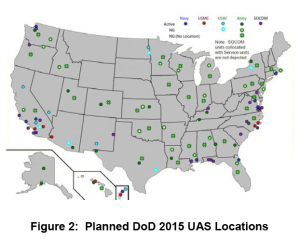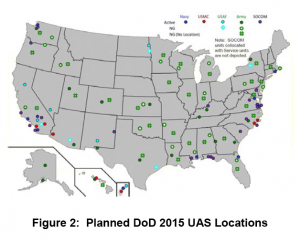Before I talk about the Gang of Four’s proposed ideas to crack down on leaks, let’s review what a crop of oversight failures these folks are.
The only one of the Gang of Four who has stayed out of the media of late–Dutch Ruppersberger–has instead been helping Mike Rogers push reauthorization of the FISA Amendments Act through the House Intelligence Committee with no improvements and no dissents. In other words, Ruppersberger has delivered for his constituent–the NSA–in spite of the evidence the government is wiretapping those pesky little American citizens Ruppersberger should be serving.
Then there’s Rogers himself, who has been blathering to the press about how these leaks are the most damaging in history. He supported such a claim, among other ways, by suggesting people (presumably AQAP) would assume for the first time we (or the Saudis or the Brits) have infiltrators in their network.
Some articles within this “parade” of leaks, Rogers said late last week, “included at least the speculation of human source networks that now — just out of good counterintelligence activities — they’ll believe is real, even if its not real. It causes huge problems.”
Which would assume Rogers is unaware that the last time a Saudi infiltrator tipped us off to a plot, that got exposed too (as did at least one more of their assets). And it would equally assume Rogers is unaware that Mustafa Alani and other “diplomatic sources” are out there claiming the Saudis have one agent or informant infiltrated into AQAP regions for every 850 Yemeni citizens.
In short, Rogers’ claim is not credible in the least.
Though Rogers seems most worried that the confirmation–or rather, reconfirmation–that the US and Israel are behind StuxNet might lead hackers to try similar tricks on us and/or that the code–which already escaped–might escape.
Rogers, who would not confirm any specific reports, said that mere speculation about a U.S. cyberattack against Iran has enabled bad actors. The attack would apparently be the first time the U.S. used cyberweapons in a sustained effort to damage another country’s infrastructure. Other nations, or even terrorists or hackers, might now believe they have justification for their own cyberattacks, Rogers said.
This could have devastating effects, Rogers warned. For instance, he said, a cyberattack could unintentionally spread beyond its intended target and get out of control because the Web is so interconnected. “It is very difficult to contain your attack,” he said. “It takes on a very high degree of sophistication to reach out and touch one thing…. That’s why this stuff is so concerning to me.”
Really, though, Rogers is blaming the wrong people. He should be blaming the geniuses who embraced such a tactic and–if it is true the Israelis loosed the beast intentionally–the Israelis most of all.
And while Rogers was not a Gang of Four member when things started going haywire, his colleague in witch hunts–Dianne Feinstein–was. As I’ve already noted, one of the problems with StuxNet is that those, like DiFi, who had an opportunity to caution the spooks either didn’t have enough information to do so–or had enough information but did not do their job.The problem, then, is not leaks; it’s inadequacy of oversight.
In short, Rogers and Ruppersberger and Chambliss ought to be complaining about DiFi, not collaborating with her in thwarting oversight.
Finally, Chambliss, the boss of the likely sources out there bragging about how unqualified they are to conduct intelligence oversight, even while boasting about the cool videogames they get to watch in SCIFs, appears to want to toot his horn rather the conduct oversight.
Which brings me back to the point of this post, before I got distracted talking about how badly the folks offering these “solutions” to leaks are at oversight.
Their solutions:
Discussions are ongoing over just how stringent new provisions should be as the Senate targets leakers in its upcoming Intelligence Authorization bill, according to a government source.
Read more →


